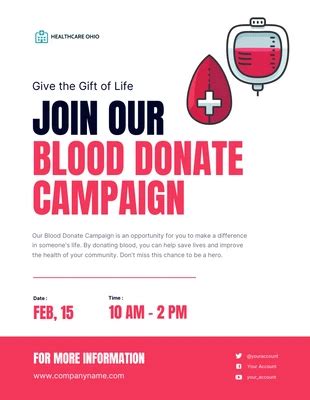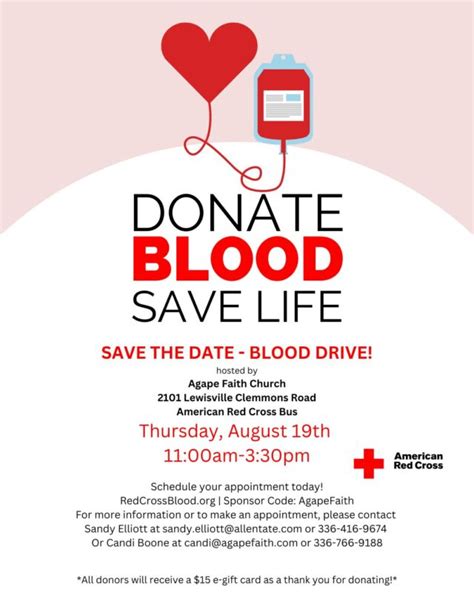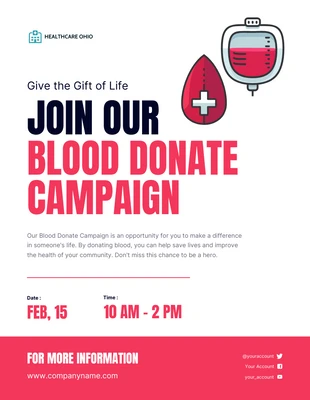Donating blood is a simple yet profound way to make a significant impact on both individuals and communities. Each donation has the potential to save lives, providing critical support to patients undergoing surgeries, battling chronic illnesses, or experiencing trauma. Beyond the immediate medical benefits, blood donation fosters a sense of community and shared responsibility. This article explores the importance of blood donation, guiding you through the process, what to expect during donation, and the numerous benefits it offers. Whether you’re a first-time donor or a seasoned veteran, understanding the impact of your contribution can inspire and encourage more people to join this vital cause.
weninsure.xyz invites you to delve into this topic thoroughly.
1. Why Donate Blood
Blood donation plays a crucial role in healthcare, making it an essential act of generosity. Every two seconds, someone in the United States needs a blood transfusion, whether for surgery, cancer treatment, or trauma care. Without a steady supply of donated blood, hospitals would struggle to provide life-saving treatments. Each donation can potentially save up to three lives, highlighting the profound impact of this simple act.
Moreover, donating blood helps address blood shortages, especially during emergencies or natural disasters when the demand surges. Regular donations also ensure that hospitals maintain a consistent and diverse supply, crucial for treating patients with rare blood types. Beyond its immediate medical benefits, donating blood fosters a spirit of community and altruism. It strengthens the social fabric by connecting donors with a cause that transcends individual differences, uniting people in a shared mission to support and save lives. Through blood donation, individuals can make a tangible difference in the lives of those in need, reinforcing the value of collective goodwill.

2. How to Donate Blood
Donating blood is a straightforward process designed to ensure safety and efficiency. To begin, you’ll need to find a local blood donation center or mobile blood drive. Most centers require you to be at least 17 years old, weigh a minimum of 110 pounds, and be in good health. Before donating, you’ll undergo a brief health screening, including a questionnaire about your medical history and a quick physical check-up.
During the donation, you’ll be seated comfortably as a trained technician inserts a sterile needle into your arm. The process typically takes about 10 minutes, during which you’ll donate approximately one pint of blood. Afterward, you’ll be asked to rest for a few minutes and enjoy a snack to replenish your energy. It’s important to stay hydrated and avoid heavy exercise for the rest of the day. Regular donations are encouraged, as they help maintain a steady blood supply for those in need.

3. What Happens During Donation
During a blood donation, several carefully monitored steps ensure a smooth and safe experience for both the donor and the recipient. Once you arrive at the donation center, you’ll be welcomed by trained staff who will guide you through the process. The initial step involves completing a health screening questionnaire and a brief physical exam, including checking your blood pressure, temperature, and hemoglobin levels.
Next, you’ll be seated comfortably in a donor chair. A healthcare professional will clean the area on your arm where the needle will be inserted. Using a sterile needle and collection bag, they will draw approximately one pint of blood, which usually takes about 10 minutes. Throughout the procedure, you’ll be encouraged to relax and stay still.
After the blood is collected, the needle is carefully removed, and a small bandage is applied to the insertion site. You’ll then be asked to rest for a few minutes and enjoy refreshments, which help replenish your energy. The entire process is designed to be as comfortable as possible while ensuring the safet

4. Benefits of Donating Blood
Donating blood offers numerous benefits, extending beyond the immediate impact on patients in need. Firstly, each donation can save up to three lives, providing critical support for surgeries, cancer treatments, and trauma care. This life-saving contribution is invaluable, ensuring that hospitals have the necessary blood supply to handle emergencies and routine procedures alike.
Additionally, regular blood donation helps maintain a stable and diverse blood supply. This is particularly important for patients with rare blood types or chronic conditions requiring frequent transfusions. By donating, you contribute to a reserve that can address both routine and unexpected medical needs.
Beyond the direct benefits to recipients, blood donation has positive effects on the donor’s health. The process includes a health screening that can help identify potential health issues early. Moreover, donating blood stimulates the production of new blood cells, which can help improve overall circulation and cardiovascular health.
On a broader scale, donating blood fosters a sense of community and altruism. It strengthens social bonds by uniting people in a shared mission to support and save lives, creating a ripple effect of goodwill
5. **How to Enco
Encouraging others to donate blood involves raising awareness about its significance and making the donation process as accessible as possible. Start by sharing information about the vital role blood donation plays in saving lives and the straightforward nature of the process. Personal stories and testimonials can be powerful in highlighting the impact of donations and motivating others to participate.
Organize or participate in local blood drives and events. Partnering with community organizations, schools, and businesses can help reach a broader audience and create a sense of collective effort. Offering incentives, such as free T-shirts or snacks, can also increase participation and make the experience more appealing.
Leverage social media and community forums to spread the word. Regularly posting about upcoming blood donation events, sharing success stories, and providing easy-to-understand facts can engage and encourage potential donors. Additionally, addressing common concerns and misconceptions about blood donation can alleviate any fears and encourage more people to take action.
Finally, recognizing and appreciating donors publicly can create a positive reinforcement loop. Celebrate milestones, such as the number of units collected or individual contributions, to show the community the tangible impact of thei
Blood donation is a simple yet profound act that has the power to save lives and strengthen communities. By understanding the importance of donating blood, the process involved, and the benefits it offers, you can make an informed decision to contribute. Encouraging others to join in amplifies the impact, creating a ripple effect of goodwill and support. Every donation counts and brings hope to those in need. Embrace the opportunity to make a difference—your contribution can truly change lives.
weninsure.xyz

